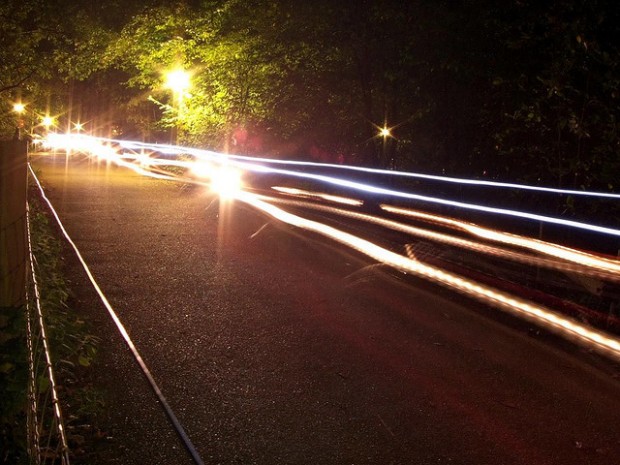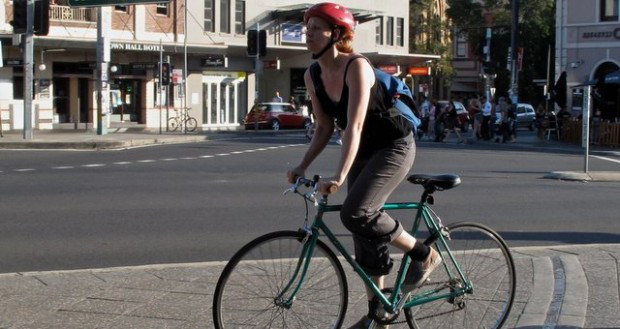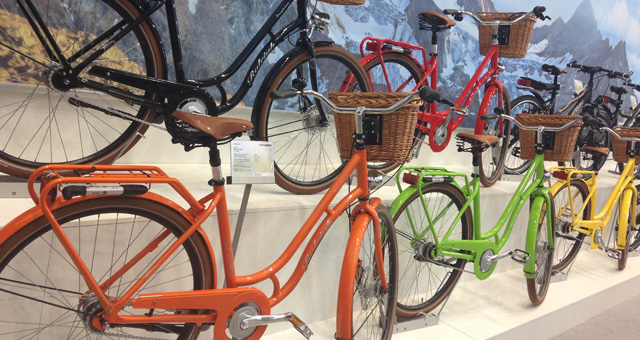We hate to say it, but the evenings are getting a little darker a little earlier.
If you are out cycling early or riding home late, it’s time to start using your lights again. If you are looking for some new ones, or wondering what type to get, here’s an introduction to the dizzying array available to buy.

Why use them
Lights are obviously there to help you see, but also – and arguably more importantly, depending on where you ride – they are there to help you be seen.
If you’ve been out on the road on a winters evening, particularly in urban or suburban areas, you’ll know just how invisible a pedestrian or cyclist with no lights and reflectives is.
The Law
It’s not just an extremely good idea to have lights on your bike; it’s actually the law. In brief, you must;
- Have a white front light, facing frontwards and visible from the front. This can be steady or flashing.
- Have a red rear light, facing backwards and visible from the rear. Again this can be steady or flashing.
- Have working lights that are in good condition.
- Have lights turned on when riding any time between sunset and sunrise. That’s literally from when the sun goes over the horizon to when it comes back up again.
If you ride without lights between sunset and sunrise, the police can stop you. The consequences vary, starting with a telling off and escalating up through fixed penalty notices (£30+) with an order to get some lights.
The direct section of the Highway Code that relates to this is section 60;
“At night your cycle MUST have white front and red rear lights lit. It MUST also be fitted with a red rear reflector (and amber pedal reflectors, if manufactured after 1/10/85). White front reflectors and spoke reflectors will also help you to be seen. Flashing lights are permitted but it is recommended that cyclists who are riding in areas without street lighting use a steady front lamp. Law RVLR regs 13, 18 & 24”
There are more specific details as to which particular lights are legal, but for the most part so long as they are bright, working and on, you should be okay.
Types of Lights
The light section of any bike shop will have lots of lights available, and it can be hard to know what to go for. Here are the key points and types to think about.
Main lights

Basically the main lights you’ll be using on your bike, these make up the vast majority of bike lights out there.
Coming in at different price-points, the price determines how bright they are and how long the battery lasts, so expect to spend about £30 on a good set. Usually battery powered, they’ll take AA, AAA, or a couple of flat 2032 batteries.
Most of these will have a plastic bracket that attaches to the frame, and the light slides on and off this. Some companies, like Cateye, sell replacement brackets and parts which is handy if you break the bracket or want to move the lights between bikes.
Best for: Commuting, riding in urban and suburban areas.
Not great for: Actually lighting up the road ahead where there are no streetlights, unless you go for the higher priced end of the market.
Notable brands: Cateye, Blackburn, Smart
Backup lights

These are usually small one or two led lights, and can be battery powered (usually flat 2032 batteries) or rechargeable using a USB cable. They are usually attached with a stretchy rubber strap of some kind, so they are easy to take on and off your bike. This means you can move them between steeds, and they are easy to remove when you stop. It also means you can move them between bikes, as you don’t have to shift over a bracket.
Best for: Having in your bag or pocket so you don’t get caught out if you stay out later than intended, if your main light fails, or just to have some extra visibility.
Not great for: These are usually not as bright, and therefore not as visible, as the larger lights – so we would generally not advise using these as your only light set.
Notable brands: Knog, Niterider, Bontrager
Off-road lights

Brilliant for mountain bikers hitting the trails in darkness, or for road rides down country lanes with no lighting. These are the lights that will actually light up your way.
They usually take a USB charger, or some use a separate battery pack. Be warned – they don’t last very long between charges, usually only a couple of hours.
Also be careful when using them in urban areas; you don’t want to dazzle oncoming vehicles. Most come with a variety of brightness settings, so keep them on a lower on road – this saves battery power too.
Best for: Seeing the road or trail, ie for off-road riding or unlit country lanes
Not great for: Long rides of more than a few hours. Suburban roads where the top setting could dazzle oncoming traffic.
Notable brands: Lezyne, Exposure, Hope
Helmet lights

Several companies are now producing lights designed to be attached to your helmet. Some of these are of the bright, off-road variety mentioned above and others are designed to increase your visibility to other traffic.
These can be front or rear lights only, or a set-up that combines both.
Great for: Additional visibility around town, or additional illumination on the trail.
Not great for: Using on their own, as you won’t be road-legal if you don’t have lights on your bike too.
Notable brands: Topeak, Exposure, Louis Garneau
Hints and tips
- Take your lights off if you lock your bike up on the street, or you may find you come back to no lights at all.
- Carry some small backup lights in your bag. They take up no room and keep you visible and legal if your main lights fail, or if you are out later than you expected.
- Check your lights before long rides; you don’t want the battery giving out halfway home.







